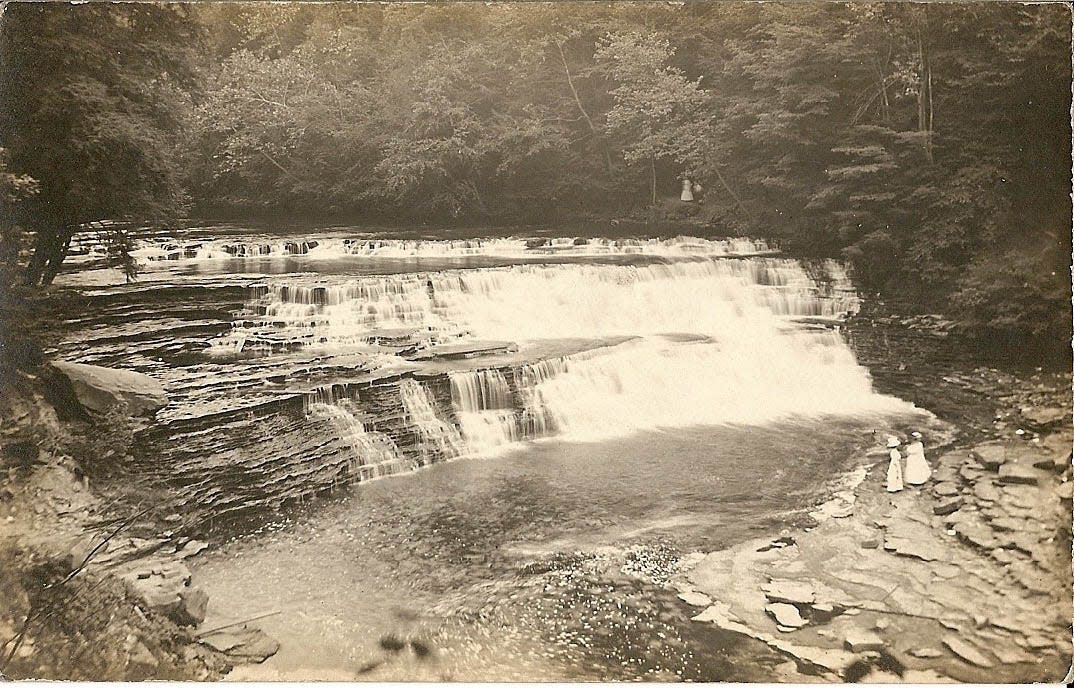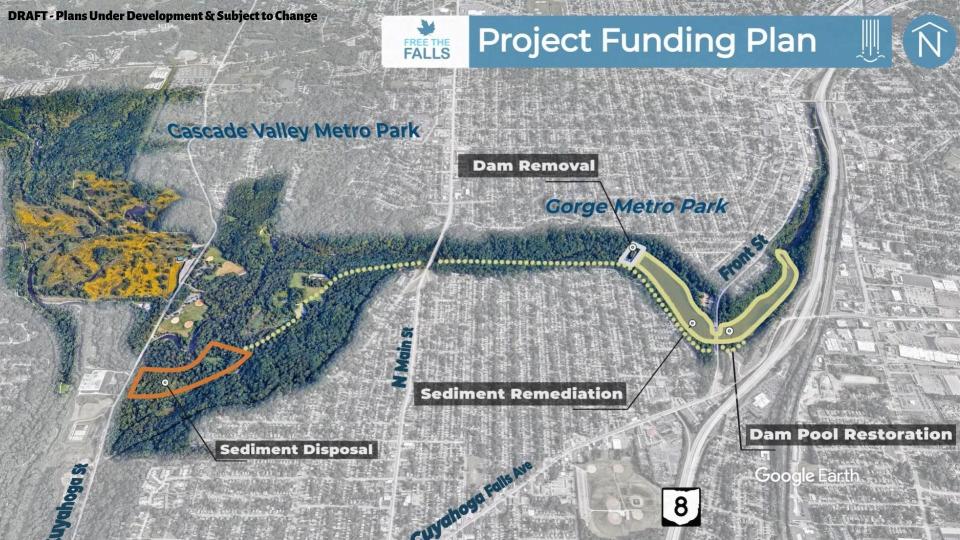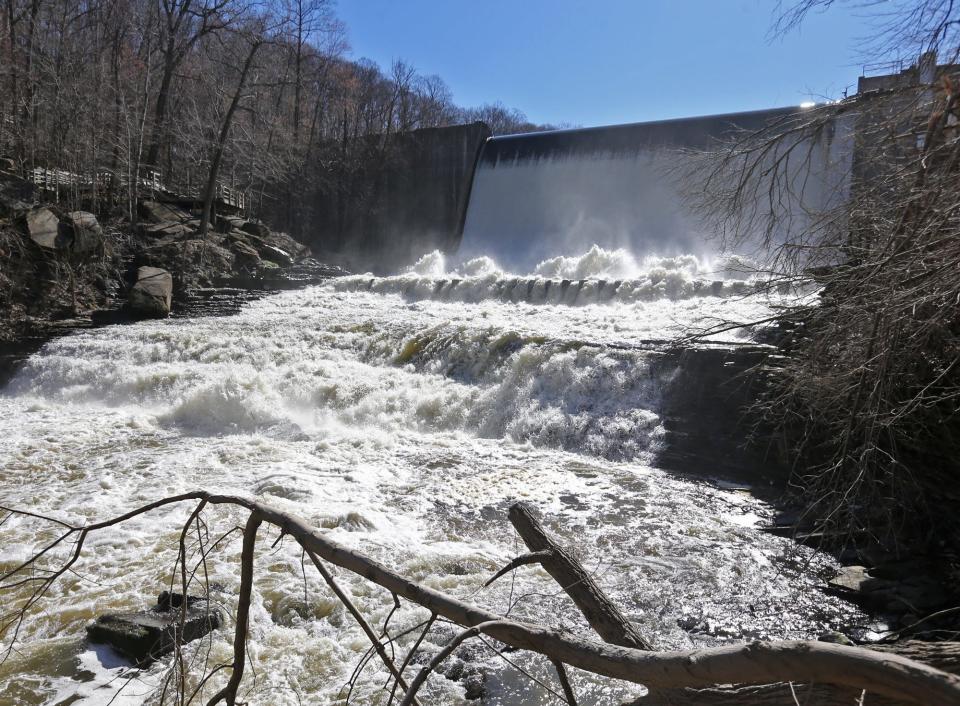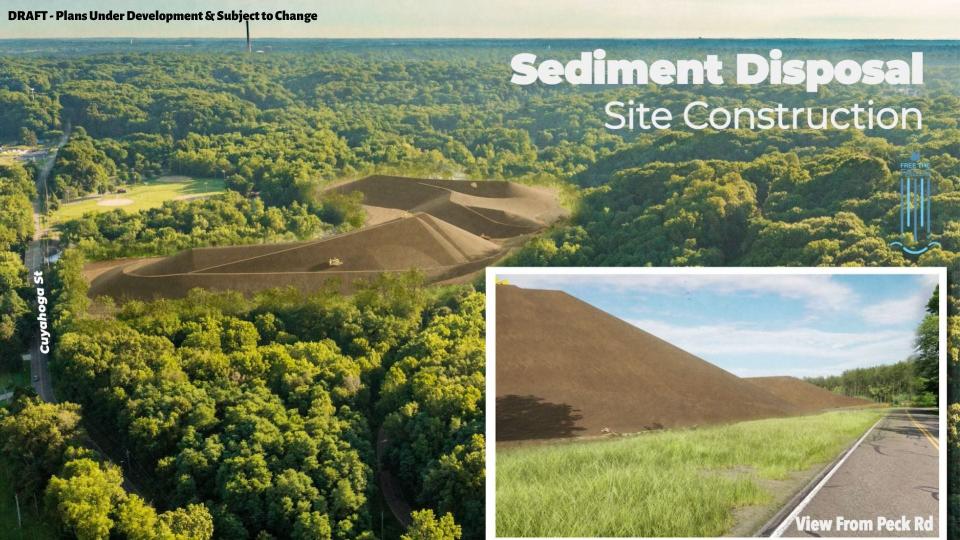Project update: $100 million finalized for removal of Gorge Dam in Cuyahoga Falls

On Wednesday, the U.S. Environmental Protection Agency and local partners announced a new $100 million agreement to clean up nearly 875,000 cubic yards of contaminated sediment under the Cuyahoga River, marking the first step toward removing the Gorge Metro Park dam.
Bill Zawiski, water quality group supervisor with the Ohio EPA's Division of Surface Water, spoke about the agreement during a public meeting Wednesday to provide updates on progress toward removing the dam on the Cuyahoga River at the Gorge Metro Park.
"We have signed the proper agreements, and this project is ready to move forward," he said, drawing applause from around 200 people who gathered at Akron-Summit County Public Library's Main Branch for the project status update.
Sediment removal is the first step in the eventual removal of the dam, which is expected to cost about $30 million more.
EPA Regional Administrator and Great Lakes National Program Manager Debra Shore first announced the agreement alongside Ohio EPA Director Anne Vogel and Akron Mayor Dan Horrigan Wednesday afternoon at the dam.
More: State contributing $25 million to Gorge Dam removal, which has officially started
The announcement comes after Akron City Council on Monday approved legislation accepting $3.2 million in funding from Great Lakes Restoration Initiative to stabilize the riverbank where the century-old wall must be removed.
Council also approved legislation allowing the city to hire contractors to perform the stabilization, along with a measure to construct a sediment placement area at city-owned property in the Chuckery Area of Cascade Valley Metro Park.
The bank stabilization, in addition to being necessary to remove the old wall, will ensure there are no issues when the water level drops several dozen feet following the dam's removal.
More: Environmentalist sees Cuyahoga River's rebirth
The dam, built in 1911 for electric power generation, is one of the largest unresolved impediments to restoring the water quality of the Cuyahoga River, Summit Metro Parks says on its website. Officials say its removal will improve river ecology, create recreational opportunities and drive economic benefits within the local community.
Five other dams on the Cuyahoga River in recent years have been removed, making the Gorge Dam the last major impediment to the flow of water between Lake Erie and well into Portage County. The Lake Rockwell Dam and its reservoir in Portage County just north of Kent, located 57 miles upriver from Lake Erie, is the primary source of water for the city of Akron.
What is the project schedule?
Though in the works for years, the official commencement of the project comes with the signing of the partnership agreement between the U.S. EPA and four non-federal sponsors: the Northeast Ohio Regional Sewer District, the city of Akron, FirstEnergy/Ohio Edison Company, and Ohio EPA.
Summit Metro Parks, the city of Cuyahoga Falls, and Summit County are also supporting the project through financial and technical support, contributing about 35% of the total cost, officials said.
Preparation of the sediment containment area, along with stabilization of the riverbank and tree clearing, are scheduled for completion this winter, with dredging operations to commence in the spring and last through the summer of 2024.
Following a second dredging season in 2025, removal of the dam is scheduled to take place in 2026.

Lisa King, executive director of Summit County Metro Parks, said there will be park and trail closures at both Gorge Metro Park and Cascade Valley Metro Park while the work proceeds, explaining trucks and construction equipment will be operating in the area.
Complicating matters, the city of Akron will also be working on construction of its Northside Interceptor Tunnel in the same area.
More: Akron fights U.S. EPA over 'wasteful' sewer project that could raise customers' rates 20%
Will parts of the dam be preserved?
Although initial plans had considered retaining side portions of the 60-foot-tall, 420-foot-wide dam as a cultural heritage, further study ruled out those plans, King announced Wednesday.
She said that with the water level expected to be 40 feet lower than at present, it would have been nice to use just remove the central spillway and leave the dam abutments in place.
"It was a wonderful idea, and everyone is going to want an overlook," she said. "But when we took a hard look at it, you know, with the age and how they were constructed, and we also can't predict how the deconstruction will go. So, we decided it was best to not keep them there."

How will the toxic sediment will be contained over the long-term?
The bulk of the project cost lies in the removal of toxic sediment that has built up in the 1.5-mile-long dam pool over the past 100 years. The sediment layer is 10 to 20 feet thick and contains lead, cadmium, pesticides and hydrocarbons from incomplete combustion of oil and coal, the EPA previously found in a study of the area.
Floating dredging platforms will suck the sediment up from the bottom of the pool, then unload it at a dewatering station, where it will be pumped about 1 mile west through a temporary pipe to the sediment disposal area. The sediment will be mixed with a concrete product and left to solidify in the disposal area. It will eventually be covered with soil and trees.

However, that won't be the end of the work, Zawiski said.
"You can't walk away from this. There will always be a need for watching" the sediment area, he said, noting "erosion is our biggest enemy."
Courtney Winter, project manager with the U.S. EPA, said studies nationally and internationally show that the technology they're using to contain the sediment provides long-term protection, including from rain and groundwater infiltration.
King said there should be no concerns that the area will some day be developed.
"It's in the Metro Parks, so it's never going to have houses on it. We're not even considering trails for the area," she said.
Will the character of the river downstream change?
Officials said the dam removal should not decrease the amount of water flowing downstream and in fact is expected to improve water quality.
"Taking this dam out is in no way altering the amount of water going down that river," he said, adding that the only part of the river that is now not recovering from decades of pollution and misuse is the dam pool.
Will the historic waterfall and rapids reappear?
Though surveys have been conducted, it remains to be seen what lies under the dam pool and layers of sediment, officials said. That includes the large, historic waterfall for which the city of Cuyahoga Falls was named.
"What's it going to look like? We don't know," said Zawiski. "No one has seen this in 100 years."
He noted it appears the lower portion of the waterfall is visible, but the condition of the rest of the feature is unclear, as it appears to be either under the dam, or "keyed-in" to the dam's structure.
"Some of it, we can see it. The part of it that's underneath ... we don't know the answer," he said.
Eric Marotta can be reached at emarotta@gannett.com.
This article originally appeared on Akron Beacon Journal: US EPA clears $100 million to remove sediment from behind Gorge Dam

